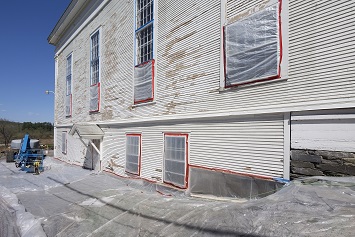Citing evidence that no level of lead in the blood of children is safe, the EPA has proposed to lower its current dust-lead hazard standards for floors and windowsills. Specifically, the Agency is seeking to lower the current dust-lead hazard standards, which was established in 2001, from 40 micrograms per square foot (µg/ft2) and 250 µg/ft2 to 10 µg/ft2 and 100 µg/ft2 on floors and windowsills, respectively. The EPA says it selected these levels because they are technologically achievable.
The proposal would most heavily affect firms that renovate buildings built before 1978, which are subject to the Agency’s Lead Renovation, Repair, and Painting (RRP) Rule. These buildings include residential structures called target housing and child-occupied facilities (COF), or nonresidential buildings or structures that are regularly occupied by children under 6 years of age. Apart from COFs, no other commercial or public buildings would be covered by the proposal.
“Reducing childhood lead exposure is an EPA priority, and today’s proposal is one component of EPA’s broad effort to reduce children’s exposure to lead,” states the Agency. “While no safe level of lead in blood has been identified, the results in children’s blood-lead levels resulting from this rule are expected to reduce the risk of adverse cognitive and developmental effects in children.”
Agency Ordered to Act
The Agency’s action responds to an order from the U.S. Court of Appeals for the 9th Circuit, which in December 2017 gave the EPA specific deadlines by which to issue a proposed rule and a final rule. In 2009, the Agency had committed to a group of petitioners to initiate proceedings to amend the dust-lead hazard standards. In 2016, the petitioners argued before the 9th Circuit that the EPA was unreasonably delaying action; the court agreed. The petitioners had also asked the Agency to amend its definition of lead-based paint, but in the proposal, the EPA states that it has insufficient information to do so.

Lead-Based Paint Definition
The 1992 Residential Lead-Based Paint Hazard Reduction Act identified two types of lead risks that needed to be regulated: lead-based paint itself and dust-lead hazards. Congress delegated to the EPA sole authority to establish national, actionable dust-lead hazard standards. Congress established an initial standard for lead-based paint and then divided authority between the EPA and the Department of Housing and Urban Development (HUD) to adjust the standard lower as needed in the future, with HUD given jurisdiction to set standards for public housing and the EPA given jurisdiction for all other locations. The initial definition of lead-based paint was paint that contained 1.0 milligrams [of lead] per centimeter squared (mg/cm2) or 0.5% by weight. The petitioners requested that the definition be changed to 0.06% by weight with a corresponding reduction in units of mg/cm2.
In its proposal, the Agency states that it does not believe a definitional change is feasible.
“Significant data gaps prevent the Agency from evaluating and subsequently determining that a change to the definition is warranted,” states the EPA. “For instance, it is currently unknown whether portable field technologies utilized in EPA’s lead-based paint activities and RRP programs, as well as HUD’s Lead-Safe Housing Rule, perform reliably at significantly lower concentrations of lead in paint.”
According to the Agency, the proposed rule would produce benefits of $317 million to $2.24 billion per year in avoided adverse health effects at an annual cost of $68 million to $479 million.
EPA’s proposal was published in the July 2, 2018, Federal Register.

